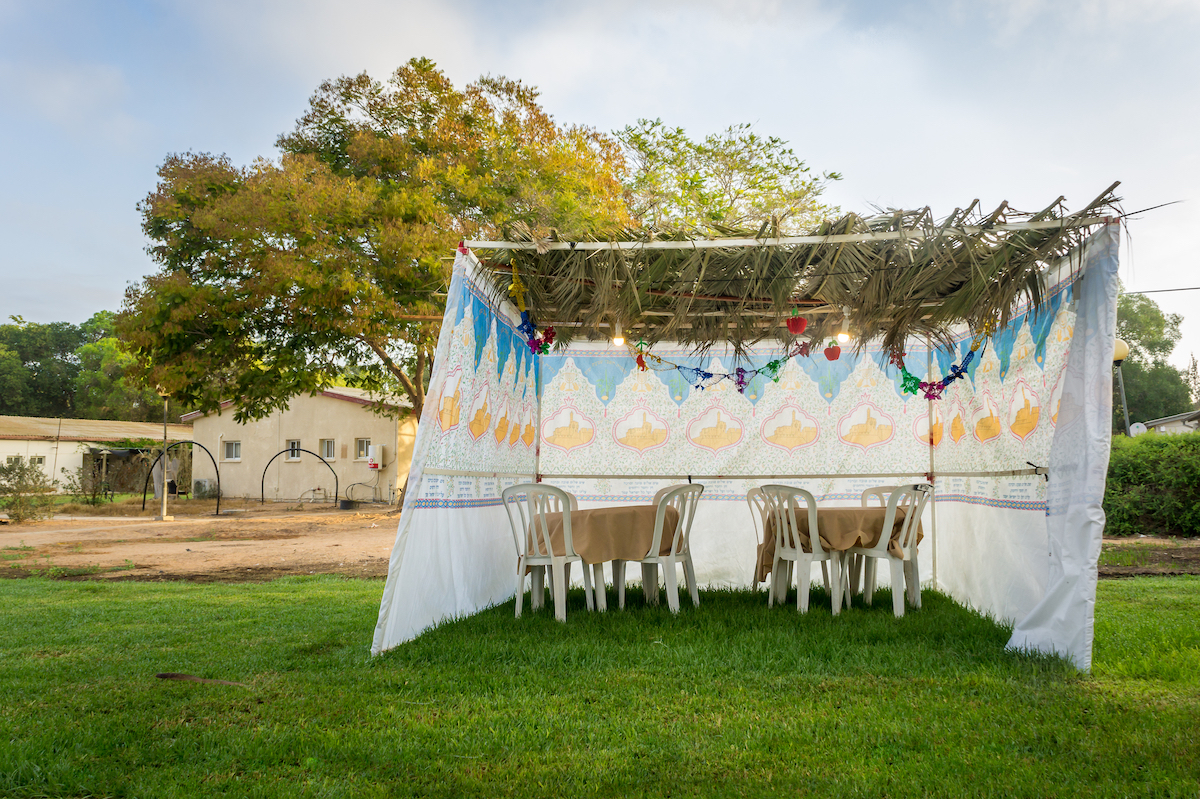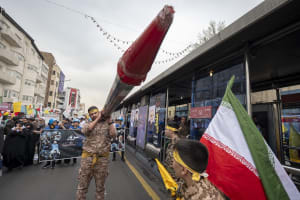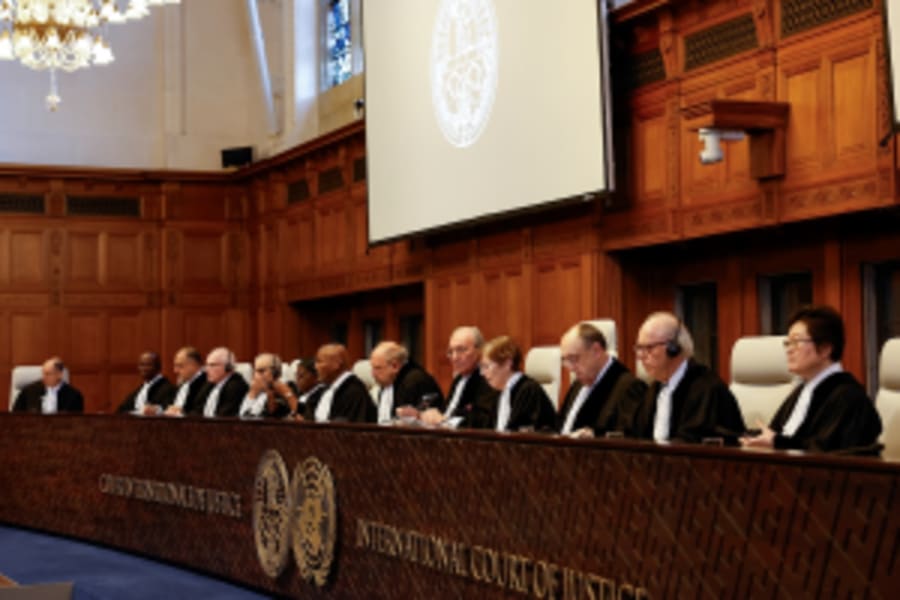Sukkot, Feast of Tabernacles, is a prophetic, thanksgiving holiday
The Feast of Tabernacles also looks forward to the final ingathering, when not only Israel but 'many nations' will be gathered to the Lord at Jerusalem

The final holiday in the biblical calendar, the Feast of Tabernacles, called Sukkot in Hebrew, has arrived.
All across Israel, booths (sukkot) are set up next to homes and restaurants to observe one of the most festive holidays in the Jewish calendar.
What is the Feast of Tabernacles?
The feast is referred to by two names in the biblical texts, the Feast of Ingathering (Exodus 23:16) and the Feast of Booths/Tabernacles (Leviticus 23:33-43).
In Rabbinic Judaism, we see these two elements incorporated in celebration, an agricultural focus and the dwelling within booths.
As the end of the agricultural year approaches, the name 'Feast of Ingathering' represents the final gathering of the fruits. In this regard, Sukkot is a type of fall thanksgiving festival, celebrating the successful harvest of the spring and summer.
In Israel, this final gathering is usually the collection of grapes, dates, (late) figs and pomegranates.
The name 'Feast of Tabernacles' commemorates the time when Israel lived in temporary dwellings during the period of wandering in the wilderness.
Today, Jews all over the world celebrate the Feast of Tabernacles by building booths (sukkot in Hebrew), in which they eat – and sometimes sleep – during the entire week of the festival.
Besides eating in the booths, Jews decorate their booths, often with items representing the seven species of produce mentioned in Deuteronomy 8:8. These items – wheat, barley, grapes, figs, pomegranate, olives (oil in the Torah), and dates, as well as honey (in the Torah, honey might refer to either date honey or honey from bees) – are all grown and produced in Israel.
The celebration of Sukkot also involves the display of four species of plants: palm branches, willow, etrog (a type of citrus fruit similar to a lemon) and myrtle. While two of these are specifically mentioned in the Torah, the palm branch and the willow (Leviticus 23:40), rabbinic tradition has specified the use of the etrog and the myrtle.
The four species are bound together, except the etrog, and held in both hands while a blessing is said, after which Jews will then wave the four species in the four cardinal directions, including up and down.
The Feast of Tabernacles is also a time for giving gifts and hosting friends and family for meals in the sukkah or booth.
Jews take the command to “rejoice in your feast” very seriously, as stated in Deuteronomy 16:14.
During the entire period of Sukkot, the noise of people sharing meals, singing songs and praying together during the feast can be heard in Jewish neighborhoods. It is easily the most visibly joyful of the three pilgrimage festivals; Sukkot, Passover and Shavuot. or Feast of Weeks.
The Feast of Tabernacles was also the last of three pilgrimage festivals, in which every Israelite male was to appear before the Lord at the place of his choosing.
Two words are used to describe the pilgrimage feasts: mo’ed and miqra.
Mo’ed is usually translated as “appointed time,” while miqra is usually translated as “convocation,"
Mo’ed comes from a root word, which means either “select" or "appoint” but can also mean to “meet with," which is why the Tent of Meeting, set up by Moses in the wilderness, is called in Hebrew Ohel Mo’ed.
Miqra comes from the root meaning “to call” and has the meaning “call together."
Both words tell us something significant about the pilgrimage festivals. The Israelites were to gather at the appointed time, to the appointed place, to meet.
The question is, who were they supposed to meet? The timing of the Feast of Tabernacles helps us understand the answer to that question.
In Deuteronomy 16:6, Moses gives this instruction: “Three times a year all your males shall appear before the Lord your God at the place that he will choose: at the Feast of Unleavened Bread, at the Feast of Weeks, and at the Feast of Booths. They shall not appear before the Lord empty-handed.
As the last of the pilgrimage festivals in the biblical calendar, the Feast of Tabernacles naturally carried with it the idea of waiting. With its themes of remembering God’s previous care for Israel, and waiting for the celebration of deliverance (the long winter months until Passover), Sukkot naturally carries prophetic significance.

It is no wonder, therefore, that the biblical prophets referred to Sukkot more than any of the other festivals.
Temporary wandering, an expectation of deliverance, and the final harvest – all of these themes are joined together with the idea of an appointed meeting time with the LORD. They are meant to inspire the prophets to look forward to the final celebration, the end of temporary wandering, the celebration of deliverance, and the final ingathering, after which God’s covenant promises: “I will be their God and they will be My people” and “I will dwell among/within them” could finally be realized.
John tells us that the desire of God was partially realized by the first coming of the Messiah, which may have taken place near the time of the Feast of Tabernacles.
“And the Word became flesh and tabernacled among us, and we have seen his glory, glory as of the only Son from the Father, full of grace and truth.” John 1:14
The Feast of Tabernacles also looks forward to the final ingathering, when not only Israel but “many nations” will be gathered to the Lord at Jerusalem. As the prophet Zechariah tells us:
“Sing and rejoice, O daughter of Zion, for behold, I come and I will dwell in your midst, declares the Lord. And many nations shall join themselves to the Lord in that day, and shall be my people. And I will dwell in your midst, and you shall know that the LORD of hosts has sent me to you. And the Lord will inherit Judah as his portion in the holy land, and will again choose Jerusalem” Zechariah 2:10-12.
And again in Zechariah 14:16, which reads: "Then everyone who survives of all the nations that have come against Jerusalem shall go up year after year to worship the King, the Lord of hosts, and to keep the Feast of Booths.”
The vision of Zechariah, written before the coming of Messiah on His first visit, was the ultimate hope of John, who wrote about the same final ingathering in the Book of Revelation 21:3-4: “And I heard a loud voice from the throne saying, “Behold, the tabernacle of God is with man. He will dwell with them, and they will be his people, and God himself will be with them as their God. 4 He will wipe away every tear from their eyes, and death shall be no more, neither shall there be mourning, nor crying, nor pain anymore, for the former things have passed away.”
During this season, as we wait with eager expectation for the ultimate deliverance and the final ingathering, we say together with John, and all the saints, “Amen. Come, Lord Jesus!”
Maranatha!

J. Micah Hancock is a current Master’s student at the Hebrew University, pursuing a degree in Jewish History. Previously, he studied Biblical studies and journalism in his B.A. in the United States. He joined All Israel News as a reporter in 2022, and currently lives near Jerusalem with his wife and children.














